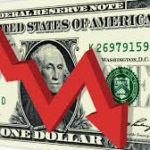 Chinese New Year is days away and for many investors; it is the most exciting event of the week, especially with a light economic calendar. It is not as big of a holiday as Christmas or New Year, but with more than 1.5 billion celebrants there will be less participation and possibly consolidation. Most of the major currencies traded higher on Monday as stocks hit fresh record highs. The improvement in risk appetite drove the USD lower across the board.
Chinese New Year is days away and for many investors; it is the most exciting event of the week, especially with a light economic calendar. It is not as big of a holiday as Christmas or New Year, but with more than 1.5 billion celebrants there will be less participation and possibly consolidation. Most of the major currencies traded higher on Monday as stocks hit fresh record highs. The improvement in risk appetite drove the USD lower across the board.
Three (3) things will drive currency movements this week – the direction of equity market, US stimulus headlines and central banks. To be clear, there are no central bank meetings on the calendar but we’ll be hearing from the heads of nearly all of the major central banks. This includes Fed Chairman Powell, ECB President Lagarde, Bank of Canada Governor Lane and Bank of England Governor Bailey – they are all scheduled to speak on Wednesday. Considering that most central bankers are optimistic about the recovery and worried about inflation, most of their comments will not pose a threat to current rallies. As new virus cases continue to slow optimism will grow, encouraging further gains in currencies.
All of this hinges on new fiscal stimulus from the US government. A path became clear on Friday when the Senate endorsed President Biden’s USD 1.9 billion trillion stimulus package after Vice President Harris cast the tiebreaking vote. The House should pass this relief package over the next two weeks and Biden hopes to have Senate approval and the final package signed by March 15. Although a higher minimum wage is off the table, a USD 1,400 stimulus check appears to be a done deal. As more positive stimulus news comes in, stocks should extend their gains. USD should suffer as more spending leads to bigger deficits. The consumer price report is the most important piece of data on the US calendar this week but higher inflation won’t cause the Fed to budge.
EUR/USD bounced off the 100-day SMA despite weaker German industrial production. The virus situation is improving across the region including Germany, but the German government is not ready to relax restrictions. Vaccination rates are still low and worries about the UK and South African variants could mean that countries in the Eurozone who were amongst the first to tighten restrictions in the winter could be among the last to ease them. EUR could underperform its peers but the market’s risk appetite will determine how EUR/USD trades.
Although GBP/USD started the week lagging behind other major currencies, it trades near 2.5 year highs. A lot has been said about how quickly and efficiently the UK government is vaccinating its citizens. At the current rate, it is feasible for the entire population to be vaccinated by early to mid summer. While this goal is still ambitious, the prospect of phased easing is not. In 2 weeks, Prime Minister Johnson will release the country’s full road map for easing the national lockdown and the excitement that comes from this should keep sterling bid.
Countries with low virus cases and strong fundamental outlook produced the day’s performing currencies. No economic reports were released from Australia and New Zealand but AUD and NZD led the gains. CAD trended higher as oil prices hit fresh one year highs but its gains were more modest compared to AUD and NZD.